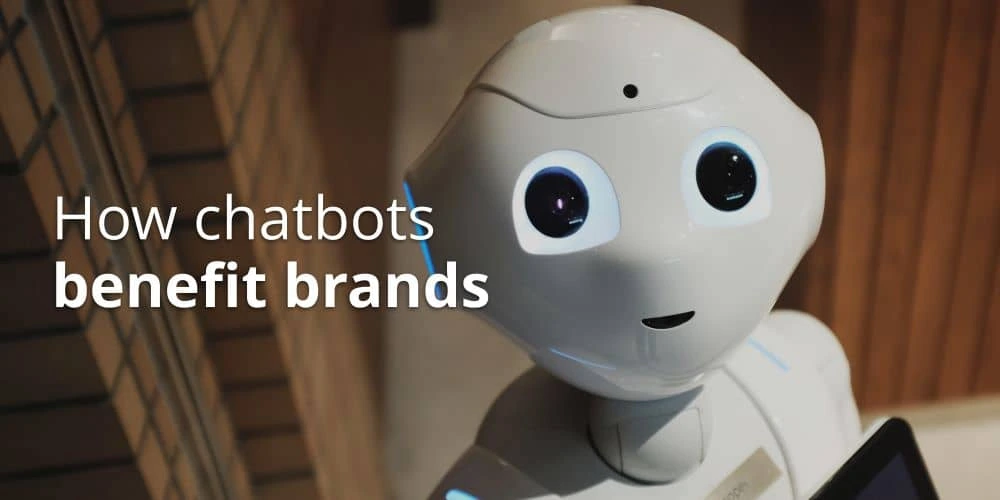When we consider brand-customer relationships and interactions, many of us instantly think of viral examples of “brands behaving badly”—like a tweet about a lost online order or a post about terrible airline service. And then there’s the aftermath of such an interaction, where the brand scrambles to do damage control by pledging to do better next time and make changes going forward.
Related: 5 situations that can damage your brand—and how to respond
But, what if there was a way companies and brands could respond to every customer in real time with a completely personalized approach? There is a new way of cultivating and maintaining customer relationships. It’s faster, easier and cheaper than any call center.
Enter chatbots
First, what are chatbots? Chatbots complete automated tasks and services via messaging apps. They also respond to users by pulling answers from a database and relying on pre-programmed phrases. Some bots employ artificial intelligence (AI) to learn and get “smarter” with each interaction, like voice assistants Siri and Alexa.
Because of their ability to interact and provide instant answers to users’ questions, bots are uniquely suited for improving customer service. Here are just a few ways chatbots can benefit brands.
Chatbots are available 24/7/365
Thanks to apps like Lyft and Uber Eats, our society has become even more accustomed to instant gratification. We want everything right here and now; it’s the definition of the on-demand economy that apps and bots helped to create. So, it makes sense that bots would step in to fulfill our need for immediate interaction with brands and companies.
Protecting your brand’s reputation for stellar customer service could be as simple as deploying an after-hours chatbot for your website. Long after your human customer service reps have clocked out and gone home, your bot is hard at work fielding questions from customers.
Additionally, since bots are designed to complete tasks and gather information, brands are positioned to solve some of their unique customer service challenges with the implementation of chatbots.
One thing to note: Be upfront when customers are communicating with a bot. In other words, don’t disguise the chatbot as a real person. In fact, bots are favored over humans when it comes to answering quick questions. So, let customers know that after-hours customer service is handled by chatbots.
Chatbots are proactive
Browse through any e-commerce website, and you’re likely to encounter a bot in the form of a helpful personal shopper. More brands are using chatbots to interact with customers and establish contact proactively in anticipation of shopper needs.
Why the shift? A recent poll found a whopping 83% of shoppers say they need help while shopping online. The thought behind this strategy is that not connecting with a shopper until they actively reach out with a question often results in the loss of a sale. But, if a brand can reach out and start a conversation with a customer at the beginning of their shopping experience, there’s a better chance of keeping them on the website.
Brands like Aerie and Whole Foods are using chatbots exceptionally well to proactively engage with customers and offer things like discounts and recipes.
Think of all the possible ways a bot could help a browsing customer before they even know they need help:
- Advising on size, fit & color
- Answering FAQs faster
- Fulfilling inventory checks
- Assisting with account questions
- Facilitating returns or exchanges
Chatbots are more consistent, faster & cheaper
Humans get burnt out, have bad days, and need to take breaks. Bots have no such problems. Bots can work around the clock and never waiver in the level of customer service they provide. Humans have a limit to how many people they can realistically help during a shift, while bots are not beholden to any such rules. Because bots are inherently adaptive and exist solely to help users, they can even build relationships more efficiently than humans. (That is, to a degree.)
Chatbots are great at collecting data from their interactions with customers, which can then be used to improve or personalize future communication. Instead of a customer starting over each time they visit your site, a bot can pick up right where they left off and build upon the previously established relationship.
Bots can handle tedious tasks (like gathering and verifying account information) much faster than a human employee, and they do it all without the need for a paycheck. Plus, the overhead required to staff a 24-hour call center far outweighs the cost of programming a chatbot.
What’s next?
Humans will never be fully replaced by chatbots for meaningful interaction, especially in face-to-face instances. But, as engineers fine-tune their programming to become more sophisticated and handle increasingly complex requests, more brands will use chatbots as a way to stay “always on.”



